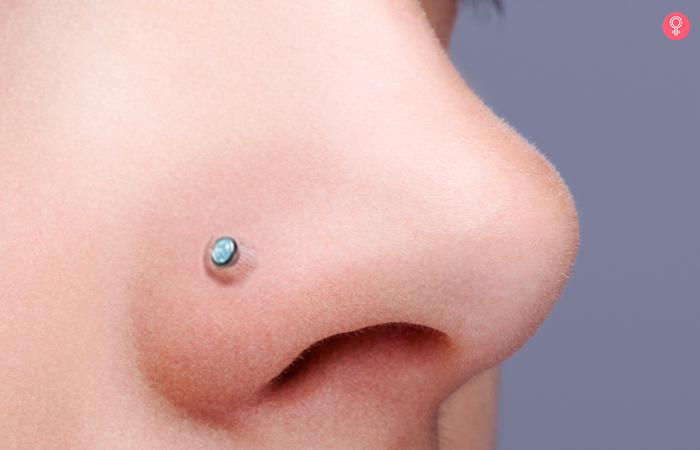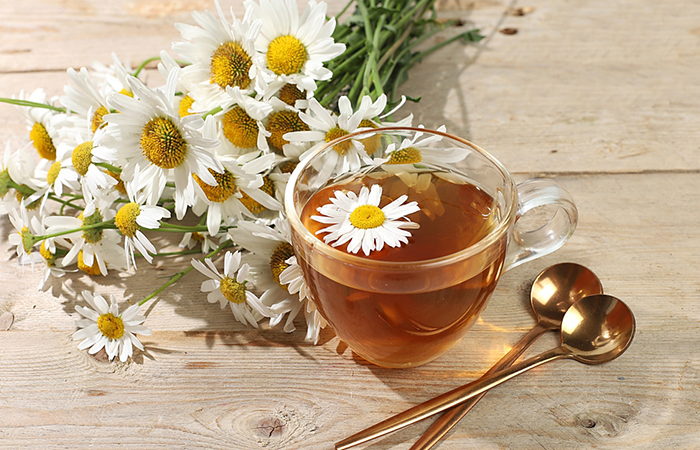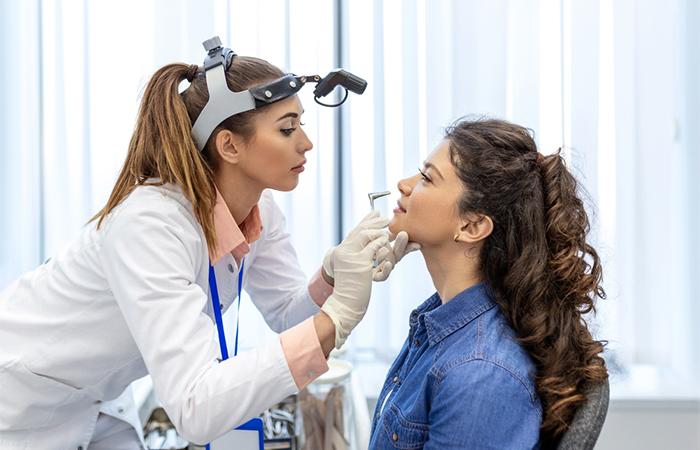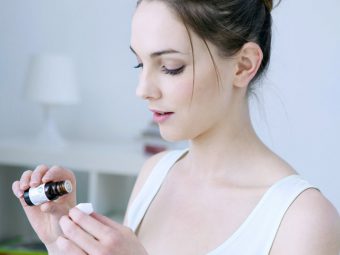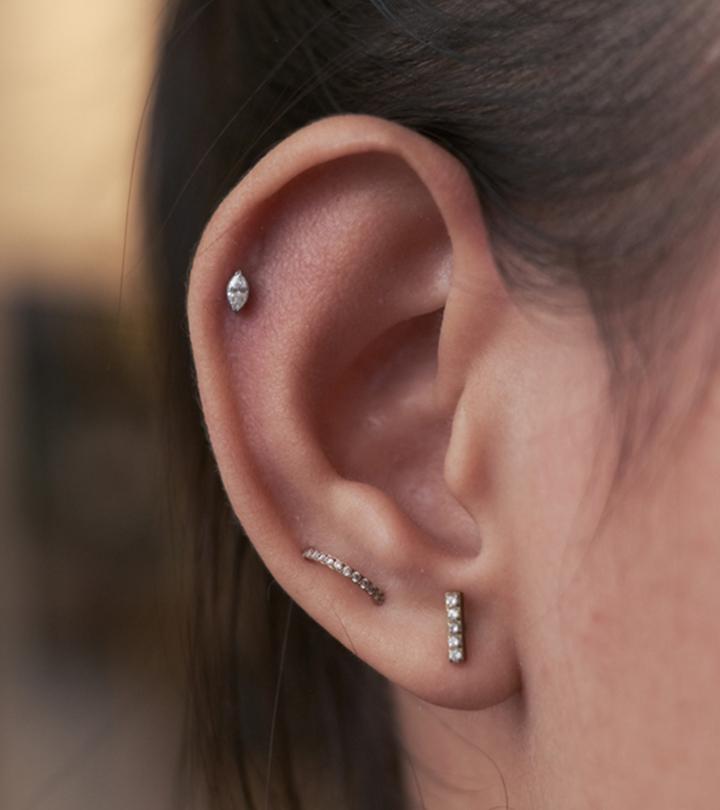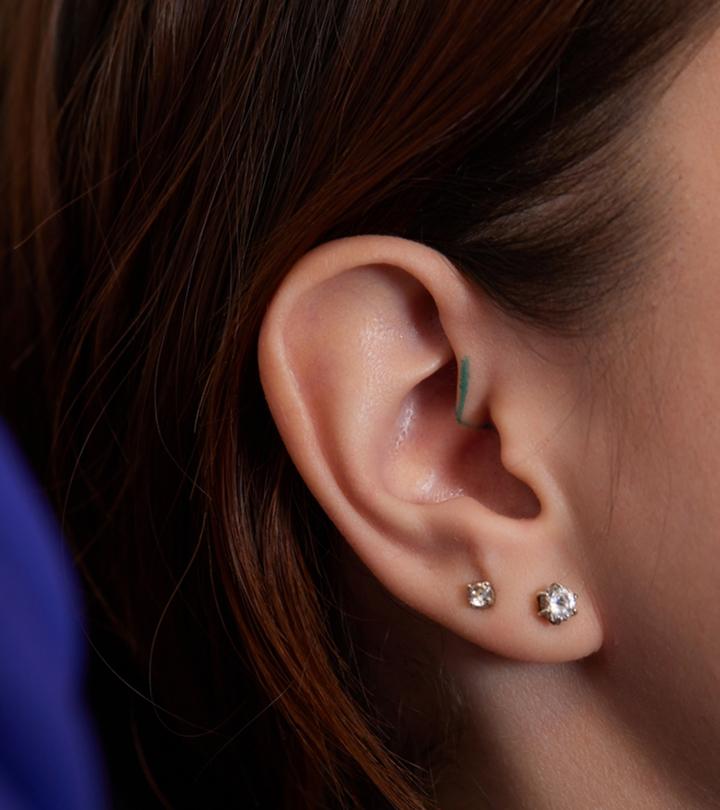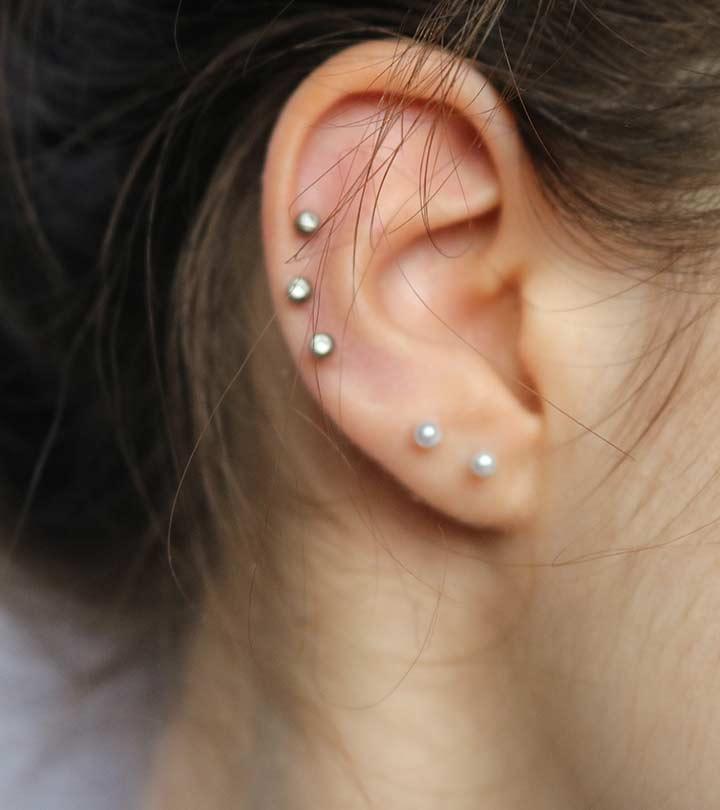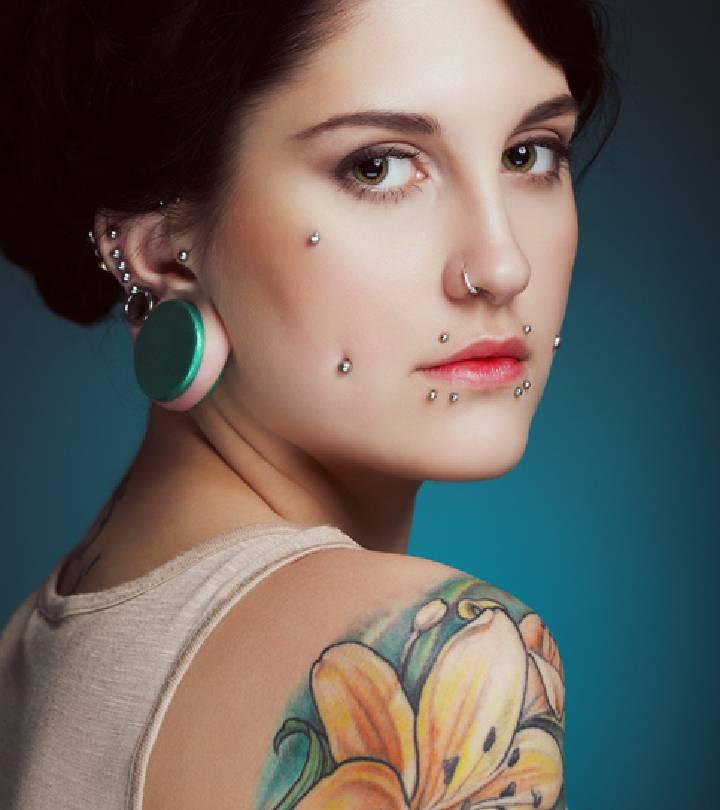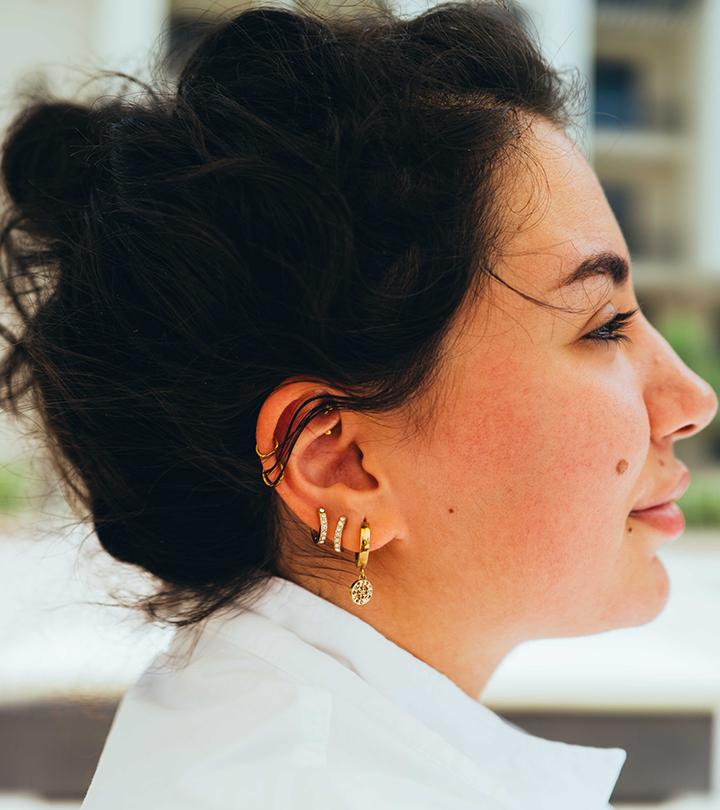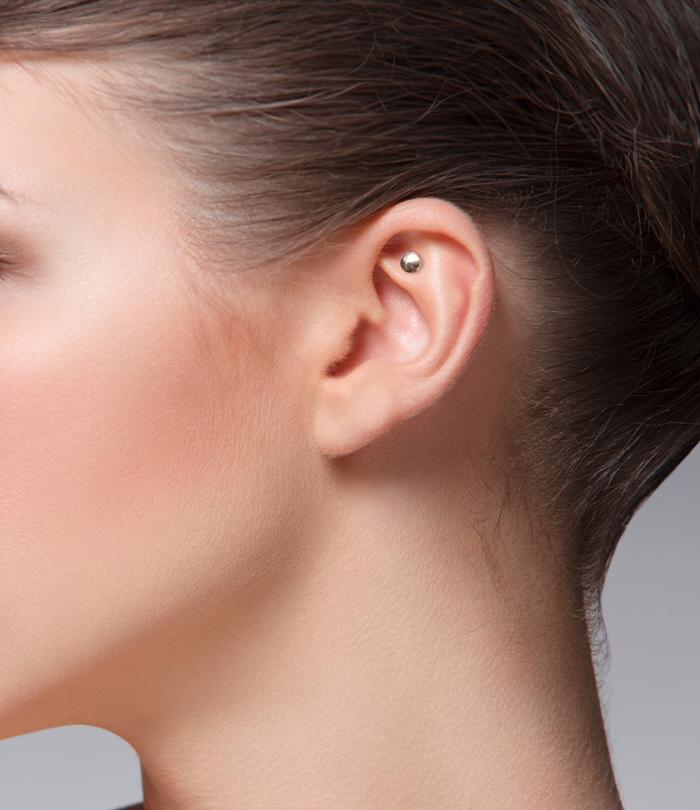How To Get Rid Of A Piercing Bump: Causes And Remedies
Understanding the types and causes of these bumps can help you treat them better.
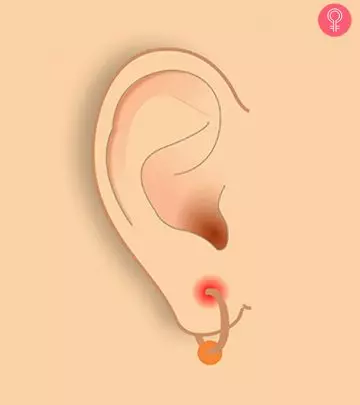
Image: StyleCraze Design Team
If you have ever had a piercing, you may have noticed a small bump near the pierced hole. This bump, also called a piercing bump, is not usually harmful and disappears as the piercing heals. However, in some cases, the bump can grow and leave permanent uneven scars. These bumpy scars can even ruin the aesthetic appearance of your piercing. Hence, managing such bumps with proper treatment is essential.
In this article, you will find a comprehensive guide that discusses the various types of piercing bumps, what causes them, and most importantly, how you can get rid of them. Keep reading to learn more.
In This Article
What Is A Piercing Bump?
A piercing bump is protruding skin tissue that commonly occurs at the site of the piercing. It varies in size and texture and may happen regardless of how well you follow the aftercare tips. Moreover, piercing bumps can be of different types, such as a keloid, hypertrophic scar, round bump, and can occur soon after the piercing is done or months later.
Bulbous piercing bumps or hypertrophic scars can be as small as a grain of mustard or as big as a coin. Long, bumpy scars like keloid can be irregular in shape and size.
There can be multiple causes of piercing bumps, which determine the type of bump or scar formation. It is important to identify them for effective treatment. Scroll down to learn what causes them.
What Causes A Piercing Bump?
A piercing bump forms when tissues cluster together to defend the damaged or traumatized skin, such as a pierced hole. It is triggered by your body’s immune system to create a patch of skin to protect it from infection or injury.
The multiple types of piercing bumps and their causes are mentioned below:
1. Keloid Bumps
Keloid bumps are raised, smooth scars that can look shiny and extend beyond the original wound or piercing. They often appear larger and stand out due to their smooth, rounded shape which may be pink, red, or darker than your normal skin tone.
Causes
These bumps form when the body produces too much collagen during the healing process. Instead of healing smoothly, the excess collagen leads to the development of these raised keloid scars. They may occur after various skin injuries, including surgeries or piercings, and might be influenced by genetic factors.
 Did You Know?
Did You Know?2. Granulomas
Granulomas are small, reddish bumps that form due to tissue overgrowth. They typically appear near a wound or piercing site. These bumps are often characterized by their small size and red coloration.
Causes
Granulomas are frequently linked to irritation or trauma during the healing process. When the skin experiences continuous irritation or injury, the body may respond by forming these small overgrowths of tissue. While they are usually benign, addressing the underlying cause of irritation is essential for effective management.
3. Pustules
Pustules are elevated bumps filled with pus, resembling a pimple, often seen near or around a piercing. They have a distinctive appearance, containing a yellowish or whitish fluid within.
Causes
Pustules are typically a sign of a potential infection. The presence of bacteria or foreign substances in the piercing area triggers an inflammatory response, leading to the formation of these pus-filled bumps. Proper hygiene and prompt attention to any signs of infection are crucial to preventing the development of pustules during the healing process
4. Hypertrophic Scars
Hypertrophic scars are raised, red scars that stay localized to the area of the piercing. Unlike keloids, they don’t extend beyond the original wound boundaries. These scars have a slightly raised appearance and are often characterized by their red or pink coloration.
Causes
Excess production of collagen during the healing process is the main cause of hypertrophic scars. This overproduction results in a raised appearance. Hypertrophic scars are more commonly observed in cartilage piercings, where the blood supply is limited, making the healing process more susceptible to an excessive collagen response. Proper aftercare and attention to piercing placement can help reduce the risk of hypertrophic scarring.
5. Abscesses
Abscesses manifest as a collection of pus within the tissue, forming a swollen lump around a piercing. The lump is often tender to the touch and may appear red and feel warm.
Causes
Abscesses result from a bacterial infection within the piercing. When bacteria enter the piercing site, an inflammatory response occurs, leading to the accumulation of pus. Proper hygiene, careful piercing practices, and prompt attention to any signs of infection are crucial to preventing the formation of abscesses during the healing process.
6. Fibromas
Fibromas are benign, firm bumps made up of fibrous tissue. These bumps typically feel solid to the touch and may appear as small nodules.
Causes
The primary cause of fibromas is excessive scar tissue formation. When the body produces an abundance of scar tissue during the healing process, it can result in the development of these firm, fibrous bumps.
7. Allergic Reactions
Allergic reactions present as red, itchy bumps, usually in the vicinity of the piercing. The affected area may become irritated and inflamed.
Causes
These reactions are triggered by the immune response to metals in the jewelry, such as nickel or certain alloys. Individuals with sensitivities can experience redness and itching, emphasizing the importance of using hypoallergenic materials for piercings to minimize adverse reactions.
After learning about the various types of piercing scars, you may be wondering how to eliminate piercing bumps. Check out the next section for more information.
8 Effective Ways To Get Rid Of A Piercing Bump
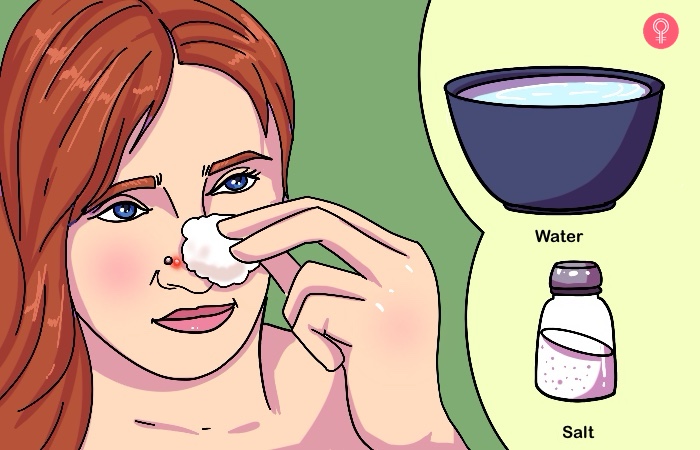
Piercing bumps may look similar but have distinct underlying causes. Some of these causes are mentioned below:
1. Find Out What Is Causing The Issue
Identify the cause of the piercing bump, whether it is due to irritation from jewelry, an infection, or an allergic reaction. Addressing the underlying cause is crucial for effective treatment.
2. Check The Jewelry
Ensure your jewelry is made of hypoallergenic materials (such as surgical steel or titanium) to minimize reactions (2). Additionally, confirm that the jewelry is of an appropriate size to prevent friction and irritation.
3. Clean Your Piercing
Maintain good hygiene by cleaning the piercing regularly with a saline solution or a gentle, non-alcoholic cleanser. Keeping the piercing clean helps prevent infections and promote healing.
4. Get A Piercing Bump Treatment
Explore over-the-counter treatments designed to reduce piercing bumps, such as saline solution soaks, chamomile compresses, or specialized piercing bump solutions. Consult with a professional or pharmacist for suitable options.
5. Consider Compression Therapy
Apply gentle pressure using clean, non-stick gauze to the piercing bump. This can help reduce swelling, encourage drainage, and alleviate discomfort. Be cautious not to apply excessive pressure.
6. Massage With Oil
Gently massage the bump with natural oils like tea tree oil or jojoba oil. This may soothe the area, promote blood circulation, and aid in the reduction of inflammation. Perform the massage with clean hands to avoid introducing bacteria.
7. Try An Ointment And Some Ibuprofen
Apply an over-the-counter ointment, such as bacitracin, or a recommended piercing aftercare product. Additionally, consider taking ibuprofen to reduce inflammation and manage pain. Follow the recommended dosage.
8. Get A Shot Of Cortisone
Consult with a healthcare professional in cases of persistent inflammation and severe piercing bumps. They may recommend cortisone injections to reduce swelling and promote healing effectively.
You can also manage piercing bumps at home with some simple and effective remedies. Learn more about them in the following section.
Try Natural Remedies For Piercing Bumps
Most of the piercing bumps are rather harmless and can be treated with ingredients from your kitchen. They are easy to prepare and use. Check them out below.
1. Chamomile Tea
Soak a chamomile tea bag in warm water and gently place it on the piercing bump. Chamomile’s anti-inflammatory properties may help soothe the area (3).
Preparation: Steep a chamomile tea bag in hot water for a few minutes, allow it to cool slightly, and place it on the affected area.
 Quick Tip
Quick Tip2. Sea Salt
Soak a clean cloth in the salt solution and gently compress the piercing bump to promote healing and reduce inflammation (4).
Preparation: Use a sterile saline solution that is labeled for washing wounds.
EM Harding, a blogger, shared some valuable insights for piercing aftercare. She wrote about the complications that may arise and how to manage them. About scarring, she wrote, “Keloids have to be treated by a doctor, but hypertrophic scarring usually goes away with salt soaks (this I know from experience) (i).”
3. Tea Tree Oil
Dilute tea tree oil with a carrier oil (like jojoba or coconut oil) and apply a small amount to the bump. Tea tree oil’s antimicrobial properties may aid in preventing infection (5).
Preparation: Mix 1-2 drops of tea tree oil with a teaspoon of carrier oil.
4. Lavender Oil
Apply diluted lavender oil to the piercing bump to harness its anti-inflammatory and soothing effects. As per a rat study, the oil may help with wound healing (6).
Preparation: Mix 1-2 drops of lavender oil with a carrier oil.
5. Aloe Vera Gel
Apply pure aloe vera gel directly to the bump. Aloe vera’s cooling properties can alleviate pain and promote healing (7).
Preparation: Extract fresh gel from an aloe vera leaf or use a high-quality, pure aloe vera gel.
6. Apple Cider Vinegar
Dilute apple cider vinegar with water and apply a small amount to the bump using a clean cotton ball. The acidity may help balance the skin’s pH (8).
Preparation: Mix equal parts of apple cider vinegar and water, and apply it on the bump.
When using natural remedies, it’s essential to perform a patch test first to ensure there are no adverse reactions. If irritation persists or worsens, discontinue use and consult with a healthcare professional.
While treating these piercing bumps may seem like an easy task, prevention is always better than cure. So, head to the next section to learn how to beat the devil of a bump.
How To Prevent A Piercing Bump
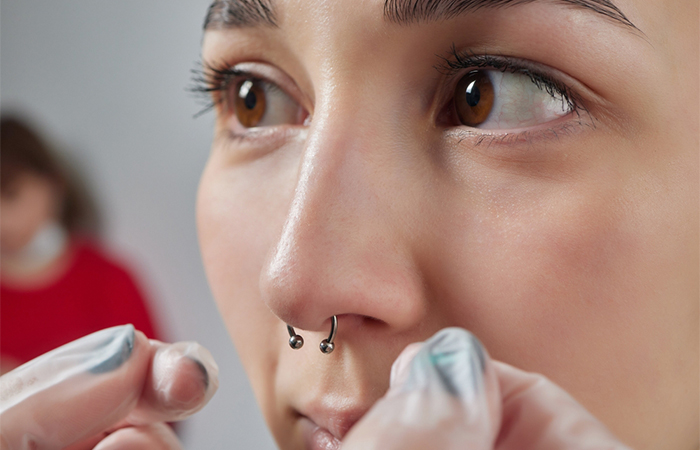
The probable way to prevent the piercing bump is by preventing your body’s immunity triggers that happen when your body mistakes the piercing as a foreign object or when the skin is severely traumatized. Common aftercare practices are your best resort in that case, as follows:
- Cleanse Regularly: Clean the piercing with a saline solution to keep it free from bacteria and debris.
- Avoid Any Disturbance: Refrain from touching, twisting, or turning the jewelry to prevent irritation.
- Choose High-Quality Jewelry: Opt for high-quality, hypoallergenic jewelry to minimize the risk of irritation.
- Protect From Trauma: Avoid activities that may cause trauma to the piercing, such as excessive movement or pressure.
- Practice Good Hygiene: Maintain overall cleanliness, including oral hygiene for oral piercings, to prevent infection.
- Seek Professional Advice: Consult your piercer for guidance and address any concerns promptly.
- Practice Appropriate Aftercare: Follow the aftercare instructions provided by your piercer diligently to support proper healing.
- Avoid Harsh Products: Steer clear of using harsh cleaning agents, alcohol, or hydrogen peroxide, as they can disrupt the healing process.
- Protect From Hair And Clothing: Keep hair, clothing, or accessories from snagging on the piercing, especially for body piercings.
- Follow A Healthy Lifestyle: Maintain a healthy lifestyle with a balanced diet, sufficient sleep, and stress management, as overall well-being contributes to efficient healing.
- Go For Regular Check-Ups: Periodically check the piercing for any signs of irritation, infection, or unusual changes, and seek professional advice if needed.
Piercing bumps can surely be treated with home remedies, but don’t wait to try them all. It is advised to see a doctor before the bump worsens. Keep scrolling to know when to book an appointment with a doctor.
When To See A Doctor Or Piercer?
If you experience any of the following issues with your piercing, it’s advisable to consult a doctor or piercer:
- Persistent Infection: If you notice ongoing redness, swelling, or discharge that doesn’t improve with proper aftercare.
- Severe Swelling: If the swelling becomes severe, it will make eating or talking difficult.
- Signs Of Allergy: If you develop itching, rash, or any signs of an allergic reaction to the jewelry.
- Excessive Movement Or Pain: If the jewelry moves excessively or if you experience prolonged pain or unusual sensations.
- Accidental Damage: In case of accidental damage to teeth, difficulty breathing, swallowing, or if you worry about swallowing the jewelry,
- Other Unusual Symptoms: If you encounter any unusual symptoms like skin discoloration, prolonged bleeding, etc., that do not resolve over time.
In conclusion, understanding and addressing piercing bumps is essential for a successful and aesthetically pleasing piercing experience. Recognizing various bump types, and their causes, and employing suitable treatments, including natural remedies, play a pivotal role. Prevention through proper aftercare, quality jewelry, and maintaining hygiene is crucial. Regular check-ups and seeking professional advice ensure timely intervention. Remember, patience and consistent care are key to managing piercing bumps effectively, promoting optimal healing, and preventing potential complications.
Frequently Asked Questions
Can I pop the piercing bump?
No, it is not advisable to pop a piercing bump. Popping can lead to infection, scarring, and the worsening of the condition. Consult your piercer or a healthcare professional for proper guidance.
How long does a piercing bump take to go away?
The healing time varies for each type of bump or scar. Normal piercing bumps may resolve in a few weeks with proper care, but it may take longer for keloids and hypertrophic scars. Consult with your piercer if the bump persists or reappears.
Why does my piercing bump keep coming back?
Recurrent bumps may be due to irritation, infection, or inadequate aftercare. Assess your cleaning routine, avoid irritation, and seek professional advice.
Is it normal for a piercing bump to bleed?
Bleeding is not typical for a healing piercing. If your bump bleeds, it may be aggravated, indicating a partially healed piercing. Consult your piercer for personalized aftercare advice.
Is it normal for a piercing bump to have pus?
It is normal for 3-4 few weeks after piercing. If it persists longer or causes a foul smell, it may indicate an infection. Keep the area clean and consult a professional for guidance.
Can I use aspirin paste for a piercing bump?
There is no clinical evidence that suggests the efficacy of aspirin paste for piercing bumps. As per anecdotal evidence, it can be used but it is not that effective. Stick to saline solutions and gentle cleaning methods to stay on the safe side.
Key Takeaways
- There are various types of piercing scars, such as keloids, granulomas, and pustules, each with unique causes and appearances.
- Their natural treatment involves using chamomile tea, sea salt, tea tree oil, lavender oil, aloe vera gel, and apple cider vinegar, along with medications.
- Practices such as regular cleansing, choosing quality jewelry, preventing trauma, and seeking professional advice for optimal piercing health.
The biggest question you will have during the piercing healing stage could be, “How to get rid of a piercing bump?” Such tiny bumps can hinder the healing of your piercing. Watch the following video to understand why they occur and how to treat them.
Personal Experience: Source
StyleCraze's articles are interwoven with authentic personal narratives that provide depth and resonance to our content. Below are the sources of the personal accounts referenced in this article.
(i) The Dos and Don’ts of Double Helix Piercings
https://emmort.wordpress.com/2018/04/07/the-dos-and-donts-of-double-helix-piercings/
References
Articles on StyleCraze are backed by verified information from peer-reviewed and academic research papers, reputed organizations, research institutions, and medical associations to ensure accuracy and relevance. Read our editorial policy to learn more.
- Keloids: Pathogenesis, Clinical Features, and Management
https://www.ncbi.nlm.nih.gov/pmc/articles/PMC2884925/ - JEWELRY SIZE AND STYLE
https://safepiercing.org/jewelry-for-initial-piercings/ - A Comprehensive Study of Therapeutic Applications of Chamomile
https://www.ncbi.nlm.nih.gov/pmc/articles/PMC9611340/ - Anti-inflammatory Effects of Topical Formulations Containing Sea Silt and Sea Salt on Human Skin In vivo During Cutaneous Microdialysis
https://www.researchgate.net/publication/51151485_Anti-inflammatory_Effects_of_Topical_Formulations_Containing_Sea_Silt_and_Sea_Salt_on_Human_Skin_In_vivo_During_Cutaneous_Microdialysis - Melaleuca alternifolia (Tea Tree) Oil: a Review of Antimicrobial and Other Medicinal Properties
https://www.ncbi.nlm.nih.gov/pmc/articles/PMC1360273/ - Wound healing potential of lavender oil by acceleration of granulation and wound contraction through induction of TGF-β in a rat model
https://www.ncbi.nlm.nih.gov/pmc/articles/PMC4880962/ - Aloe Vera: A Short Review
https://www.ncbi.nlm.nih.gov/pmc/articles/PMC2763764/ - Antimicrobial activity of apple cider vinegar against Escherichia coli, Staphylococcus aureus and Candida albicans; downregulating cytokine and microbial protein expression
https://www.ncbi.nlm.nih.gov/pmc/articles/PMC5788933/




